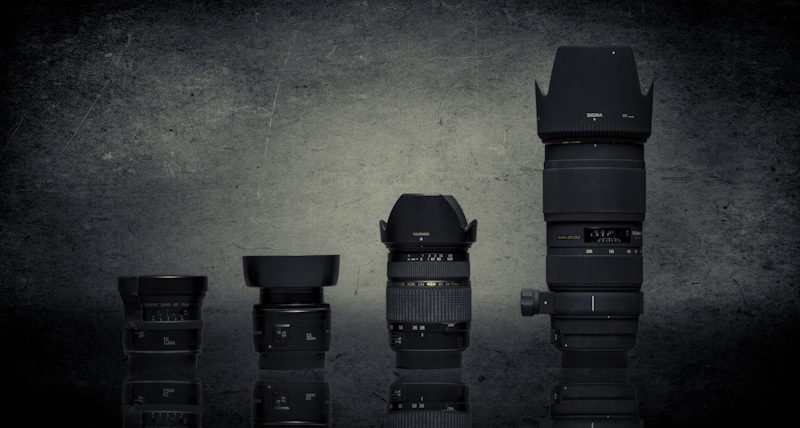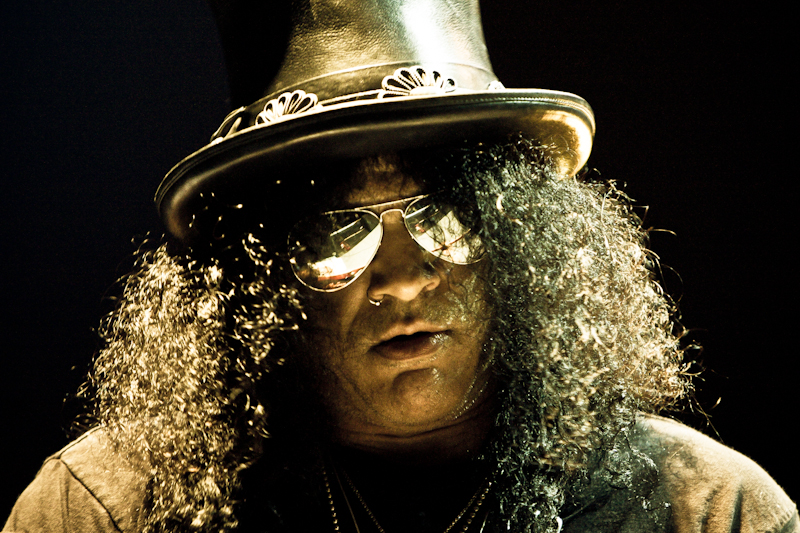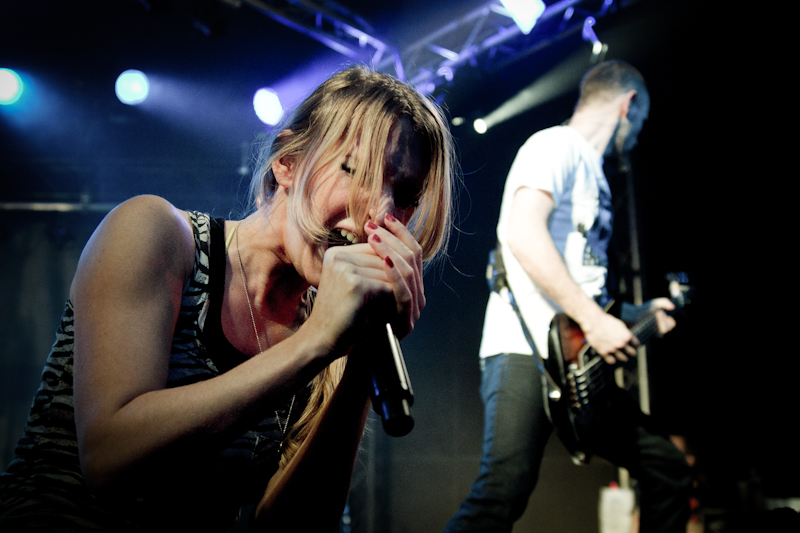[one_half]
[dropcap style=”font-size: 60px; color: #9b9b9b;”] F [/dropcap]or every kind of photography there is the creative aspect that plays an important role in the choice of lenses. However, in concert photography there is one more thing to consider: The situation will sometimes force you into choosing a lens, even if you know that it will lead you further away from what you had in mind in terms of creative composition. There’s no point in using a Fisheye lens when you have to shoot from the back of the venue, or in the other extreme using a 200mm Zoom lens when you are 50cm away from the main subject.
That being said, it’s not always possible to know into which situation you will stumble. And even if you do, .. things change, … and when they do you have to react quickly and professionally. Instructions that were given to you when you arrived at the venue can change in an instant, and leave you standing there with an empty look in your eyes and panic setting in faster than you’d like. You have to be prepared to adapt quickly. There’s no point in trying to argue with the promoter or stage manager, you will most likely end up being banned from the gig. Instead use the little amount of given time to evaluate the situation and get the most out of it. With time you will know the venues quite well and you will be able to adapt faster and more creatively to situations as they arise.
You have to be prepared to adapt quickly.
[dropcap style=”font-size: 60px; color: #9b9b9b;”] P [/dropcap]eople often ask me if choosing an Canon “L” or Nikkor lens is the only way to go. My response is often met with a very cold stare that usually makes me regret having said what I actually think about this. I need to confess though, that for everything outside of the realm of concert photography I use Canon lenses only. Most of them are “L” lenses, and I wouldn’t use any other Lens for that purpose.
But I see that differently for my concert photography. If you start working in the pit you will quickly realize that the right position will often lead to the best pictures. Reading this you are probably thinking, …. that’s easy enough. In theory it is, but in a real life situation, the pit might be 50 cm deep and you are 1 out of 10 photographers all moving to take that amazing shot from the same angle. Cameras and lenses will be handled a bit rougher than you’d like them to be. For me banging up a 400€ lens is acceptable but 1500€ is another story. If the image quality from one lens would be perceptible to the naked eye, I would probably think differently about this. But I’ve never seen anyone tell me a concert picture would be nicer if I had shot it with a Canon lens instead of a Tamron or Sigma Lens. Agreed, .. the Autofocus might be a tad slower but I experienced my AF chasing maybe once or twice since I photograph concerts.
[dropcap style=”font-size: 60px; color: #9b9b9b;”] M [/dropcap]y main working horse is the Tamron 28-75mm F2.8, after that I would say the Sigma 70-200mm F2.8 sees the most usage. Finally the Canon 15mm F2.8 Fisheye is a nice lens to use for those impressive close up pictures. I use prime lenses from time to time but if I get stuck in a crowded pit where I can only move 20 cm to each side I miss the flexibility of the zoom lenses. When I use one camera only I have the 28-75mm F2.8 on it to start the concert and switch on a need to basis. When I shoot with two bodies I usually have the 28-75mm F2.8 on one and the 70-200mm F2.8 on the other. I will mount the Fisheye when I see that the stage is set up in way that might lead to interesting wide or close up pictures. I don’t keep the Fisheye on the camera for longer than half a song, maybe one song if I can see that it’s worth taking the risk.
I use prime lenses from time to time but if I get stuck in a crowded pit where I can only move 20 cm to each side I miss the flexibility of the zoom lenses.
First a small description of the main differences from a creative point of view. The 28-75mm will be on my camera the most of the time. I will start every concert with that lens. It’s a very versatile focal length and thus allows me to be more creative with my compositions. [/one_half]You don’t have much influence on compression in the picture or even depth of field (as you will be stuck at F2.8 most of the time), but that focal “middle range” is a very good base to get a feeling for the composition. Depending on the size of the stage you can even get some close-up portrait shots without having to use the 70-200mm, or a nice wide overview of the whole stage if you are further back from the stage.

[one_half_last][dropcap style=”font-size: 60px; color: #9b9b9b;”] I [/dropcap] will choose 70-200 mm when I want to isolate my subject and make sure that there won’t be anything else in the frame competing for attention. The background will seem closer to the subject and nicely out of focus (since you’re shooting at F2.8 or less). It could be a full body shot or a portrait shot, but the point is that I want the subject to be dominant in the picture. These are usually killer shots that will attract a lot of attention, but one or two of these will be enough for a selection as you want to portray the general feel of the show as well. Another situation in which I am forced to use the long focal length is when there is no pit to shoot from. Sometimes there’s a platform in the middle or on the sides of the room, sometimes I have to shoot everything from the back of the venue. Shooting at 200mm will force you to up the shutter speed to around 1/160 of a second, which in turn means that you have to up the ISO and you will loose a lot of creative possibilities in terms of composition. But hey, … the only choice we have is to adapt and work with what we have.
I will choose 70-200 mm when I want to isolate my subject
[dropcap style=”font-size: 60px; color: #9b9b9b;”] T [/dropcap]he Fisheye is an awesome tool, if used correctly you could end up with one of those killer shots, but at the same time it’s the lens that is the most difficult to use. You have to be very close in order to get the most out of it, and you have to be really fast. When an artist come close enough to allow you to use the Fisheye, you have 2 or 3 seconds to get the settings right, focus, compose the shot and release the trigger. If it works, … killer shot … pack your stuff and enjoy the rest of the concert, you bagged the shot !! I often use the Fisheye to make a shot of the whole stage if there is not too much clutter on it. This is a situation in which shooting the support act, and watching videos of a previous concerts can help in terms of preparation, you are usually able to see the setup of the stage and get a feel if you will have a rather static or more active performance, and thus makes the choice of lenses a lot easier.
When an artist come close enough to allow you to use the Fisheye, you have 2 or 3 seconds to get the settings right, focus, compose the shot and release the trigger.
[dropcap style=”font-size: 60px; color: #9b9b9b;”] T [/dropcap]he backup lens I never leave the house without. It’s probably the cheapest lens that I own, but it’s the one dearest to me. It’s the famous Canon 50mm F1.8 II lens. If you are a Nikon shooter, fear not as I think Nikon carries the same lens with equivalent qualities in their program. Where it lacks in construction quality and autofocus speed (which is not that bad) it marvels in weight, image quality and speed. It’s the perfect lens for when you are asked to take some really quick pictures when there’s no time (or permission) to set-up any kind of lights. Fix that nifty 50mm at F1.8 on your camera and you are on the safe side. It’s a great portrait lens as well. To be honest any F1.8 lens could fulfill that purpose but I don’t know of any that comes close to the 50mm’s quality and price.
It’s the perfect lens for when you are asked to take some really quick pictures when there’s no time (or permission) to set-up any kind of lights.
[/one_half_last]



Leave a Reply